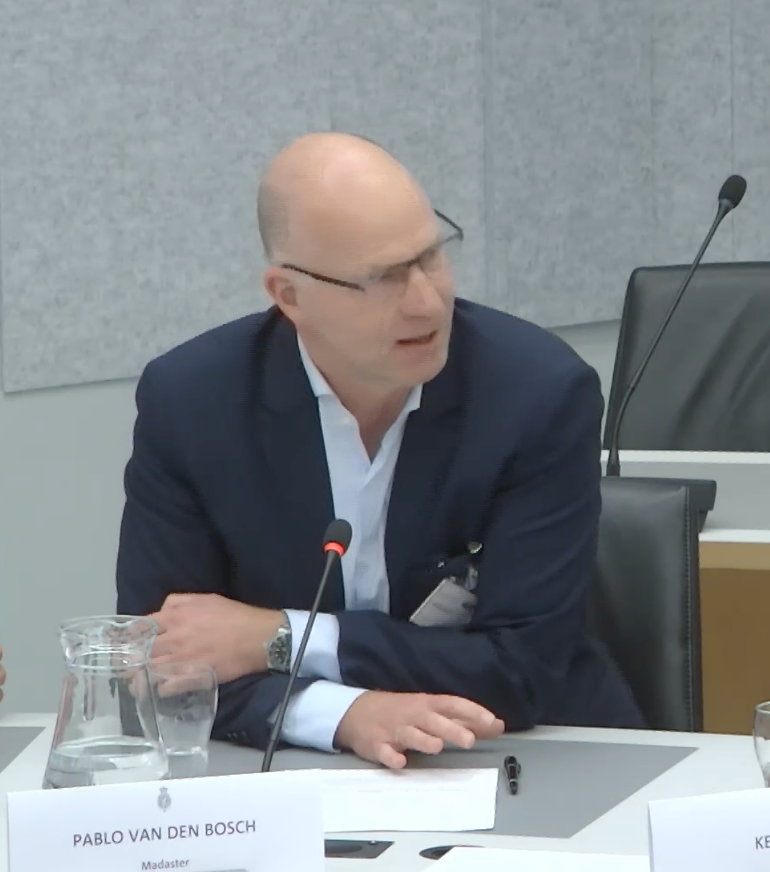MATERIAL PASSPORTS IN THE MECHANICAL ENGINEERING SECTOR
Author: Casper De Schrevel, Circular Economy and Healthy Building Advisor Deerns
As an advisor on the circular economy and healthy buildings, I am continually looking for the next step to make the world a little healthier and more circular. Smart solutions that make sense, logical thinking and being open to new ideas are all helpful. Material passports are indispensable if we are to accelerate the circular economy.
Deerns has been involved in the development of the platform as one of Madaster’s Kennedys. More and more companies and clients are embracing the material passports for their buildings. In general, the process of documentation and registration of these buildings goes very well, but doing so for the various mechanical and electrical installations can often be tricky. Madaster also recognises this problem, so it was time for us to join forces!
IMPACT OF INSTALLATIONS
On average, the environmental impact of mechanical and electrical installations accounts for about 35% of the total impact of a building. The impact is even greater if we add the fact that we are using more and more technology to make us feel more comfortable. In addition, the technology in a building is often replaced before the end of the building’s lifespan. This involves the use of additional materials, transport movements and energy consumption. It is crucial to design for the long term and make smart choices that bring those additional materials back into the circle.
A MATTER OF REGISTRATION?
Registration is certainly important, but not enough by itself. In the first place, it is only part of the bigger picture. Circular buildings start with being designed to be dismantled/disassembled, to be adjusted to meet up-to-date standards and to enable reuse of materials. If such options are included in the design, you also want to document them properly — to know exactly where the materials are located inside a building and in what quantities. In addition, the design needs to take the right circular materials into account and whether certain choices need to be made.
THE CURRENT SITUATION
Madaster primarily uses IFC models (a file format for exchanging and sharing specific BIM information) to import the data on a building into the online platform. The importation process shows a number of material passport categories are shown, such as construction, casing, technical installations, finishing and interior. When a building or product reaches the end of its use phase, the platform will reveal which of the incorporated materials can be recovered. With the correct NL_SfB coding, the materials are fitted with a label, which is then documented and guaranteed in the passport. For the technical installations, however, the right information is often lacking. On the one hand, because the market has not always asked for this information, and on the other hand, because the chain along which the technical model is passed on is not fully interconnected. In addition, the process often does not use uniform language. Installations, as a whole, often consist of static materials and mechanical — and usually hybrid — installation parts. Examples are ducts and air handling units or piping and pumps. Static materials are relatively easy to integrate and are manufacture-independent, whereas this is not the case for the components of mechanical installations. This also means that it is not clear how the technical installations should be coded.
HOW TO SOLVE THIS ISSUE?
Our idea is to couple the current generic object library materials and NL_SfB coding (classification for construction and installation parts) in agreed parameters. This could, for example, be a library/database as prescribed by the Dutch Revit Standard, or the Uniform Object Library (UOB) that is currently being developed, or another type of generic database. In this way, a uniform material and product library could be created that enables the transfer of clear, unambiguously communicated information throughout the chain. This would prevent lacking, unusable and/or unnecessarily documented information. The final output is important, as well as whether and in what form it should be included in the online library.
To obtain insight into what information about materials and products can be assigned to generic components, Madaster and Deerns conducted a survey among experts in the field of technical installations. Their aim is to arrive at a complete list that BIM modellers can work with in the design phases so that technical installations are correctly registered and passed on. In this way, we will be able to take the transformation to the circular building economy one step further.
RESULTS
The survey shows that, due to a lack of information and lack of clarity, it is not clear how certain information should be registered and documented (e.g. the type of information and material quantities). It is unclear what is required and at what point in time. Electrical and mechanical installations consist of many and very diverse components; their units can be unambiguous but very complex in terms of composition. It is very difficult to keep the line from coarse to fine, from global to detailed. In short, there is a lot of information, but it is either not used at the appropriate level and/or not at the right time or place.
Together with a number of market parties, including Schneider Electric, we would now like to take further steps to arrive at an unambiguous documentation method. A method that is easy to use for everyone. We will keep you informed of the developments!



